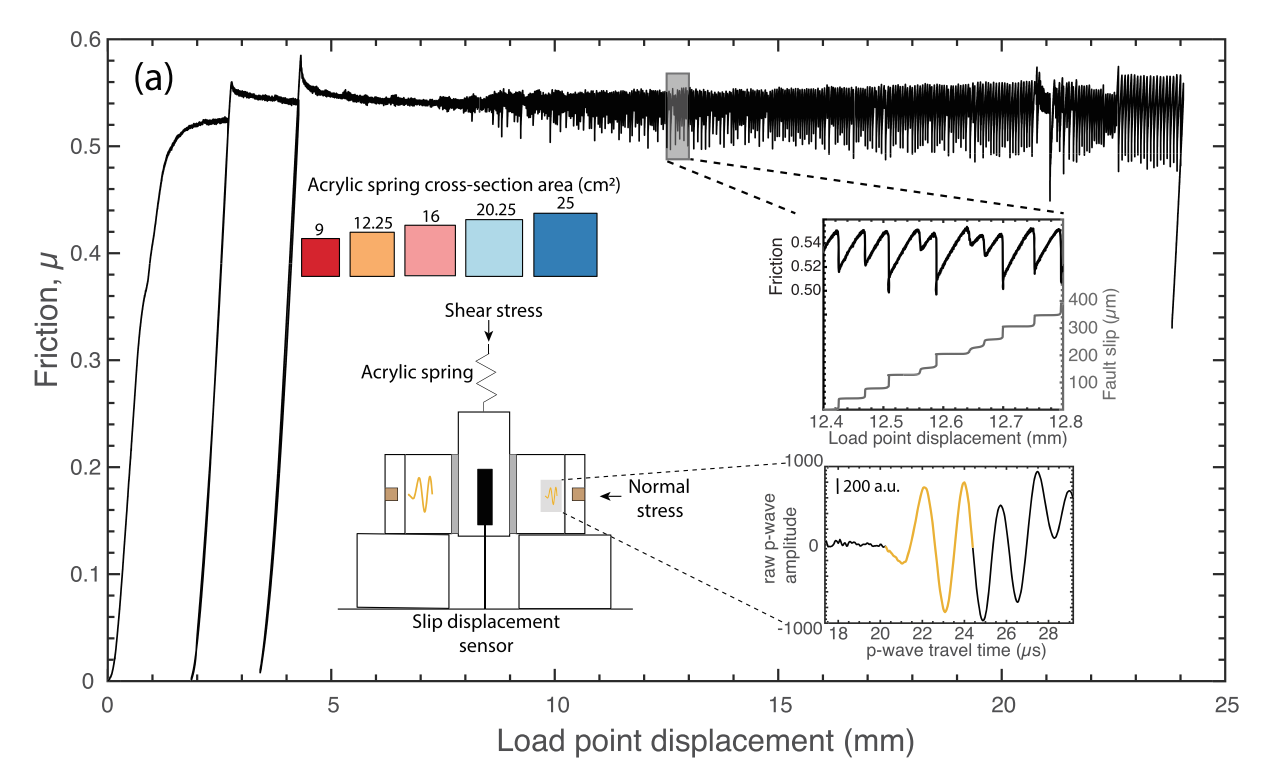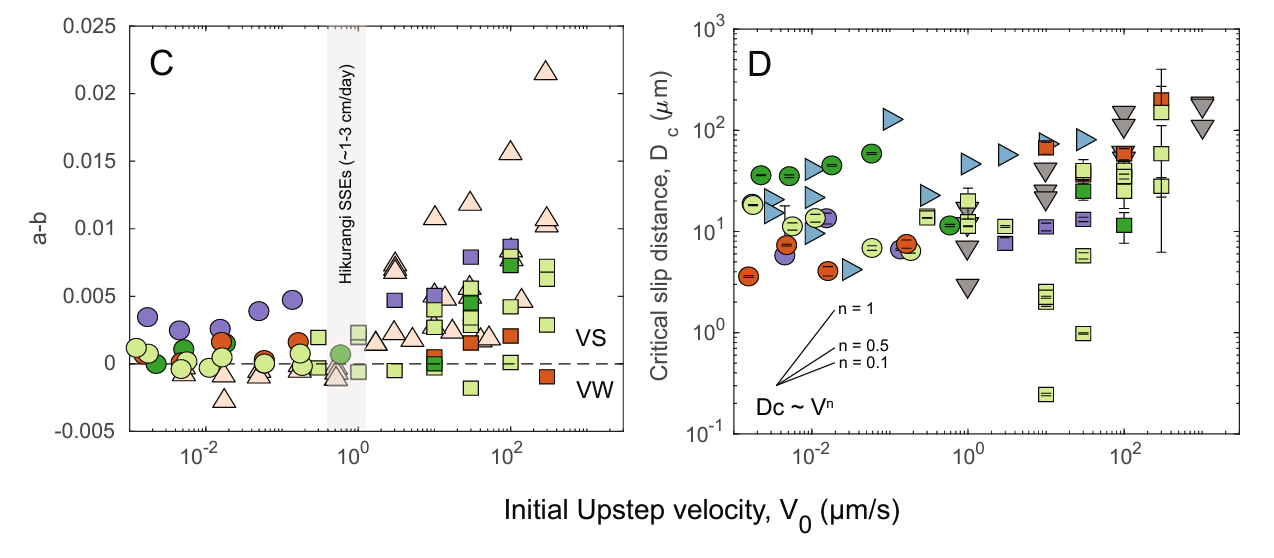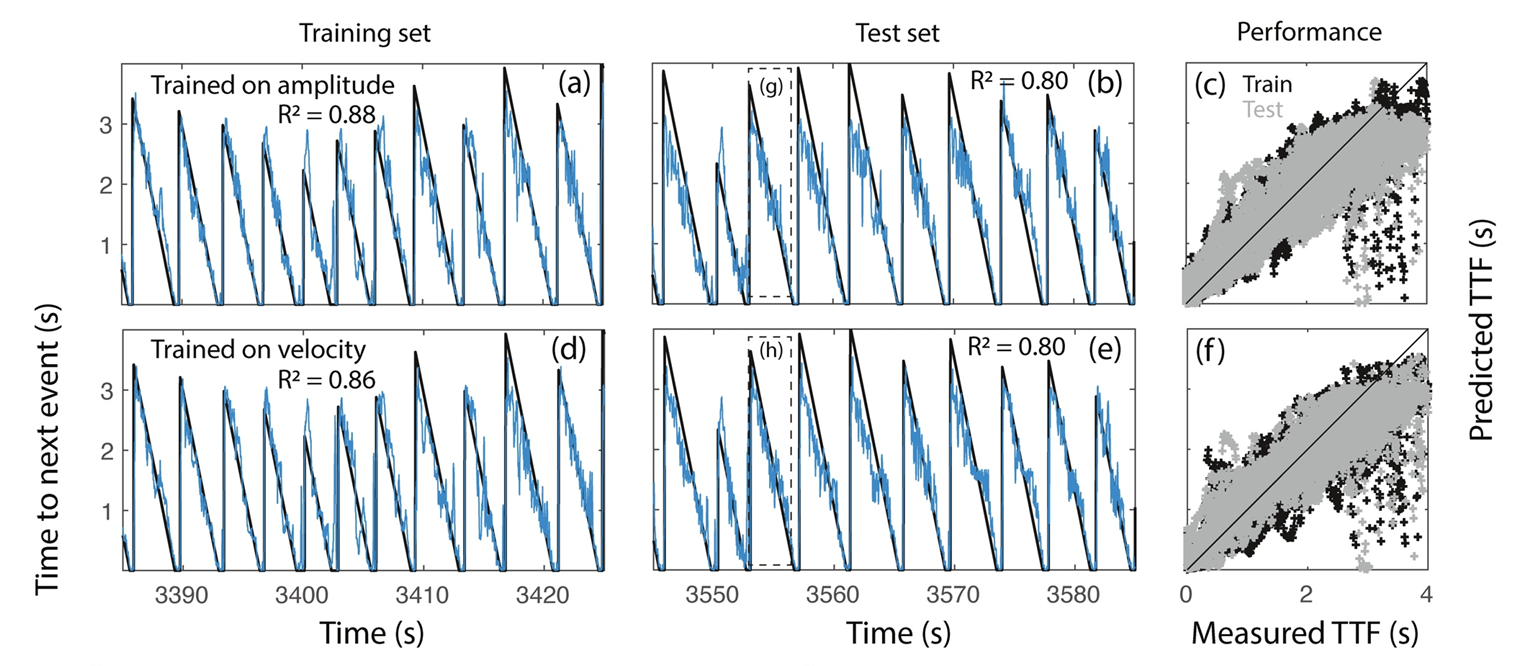Research
My research currently focuses on four main themes and many projects fall under more than one of them:
Processes associated with earthquake initiation, propagation, and termination

Earthquakes are complex frictional instabilities. We are interested in how and why earthquakes start, propagate, and stop in the multitude of ways that they do. We can generate smaller, scaled earthquakes in the laboratory and study them closely with a variety of instrumentation to better understand the stresses and frictional properties that are conducive to the generation of various slip modes including earthquakes, slow slip events, and stable creep. Recently, we’ve been interested in the physics and geophysical observations of preseismic slip and postseismic relaxation - using active ultrasonic techniques and acoustic emission monitoring.
(Some) related publications:
- Variations in p-wave amplitudes and velocities modulated by competing effects of slip and stress
- Pre- and post-seismic changes in p-wave amplitudes during stick-slips
- Evolution of frictional state in response to rapid changes in normal stress
Mechanics of near-trench deformation at subduction zones

Understanding how strain is accumulated and released near the trench at subduction zones is crucial for a better understanding of tsunamigenic earthquakes. Some of our recent work has focused on recasting this problem as a competition between fault healing/restrengthening and tectonic loading. We used this framework to show the origins of shallow slow slip at the northern Hikurangi margin by combining experimentally determined frictional healing and numerically estimated annual stressing rates.
Frictional and microstructural characterization of fault zones

Experimentally determined values of fault frictional strength and stability can be used to better understand the boundary conditions necessary to sustain a variety of tectonic slip modes including elastodynamic ruptures and slow slip. We utilized samples acquired during International Ocean Discovery Program Expedition 375 to experimentally constrain the frictional behavior of inputs to the shallow plate boundary at the northern Hikurangi margin. Current and ongoing work is focused on the Wasatch Fault Zone in Utah.
Machine learning applications to fault zone processes

Although laboratory stick-slip instabilities are not nearly as complex as crustal earthquakes, they can be quite complex and somewhat unpredictable. We have successfully used simple machine learning algorithms on geophysical observables such as seismic wave amplitudes and velocities to forecast these stick-slips in cm-scale faults in the laboratory. Current and future efforts will focus on determining whether such methods are applicable to larger, more complex faults in the laboratory and in nature.
Related publications: Shreedharan et al., 2022 and Shokouhi et al., 2021